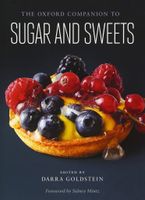Advertisement
Brown Sugar
Published 2015
Before the invention of centrifuges, molasses was removed from sugar crystals by packing them into inverted cones and allowing the molasses to drip out the bottom. See molasses. The color within these sugar cones would range from pale golden to brown, depending on the residual molasses. Different names came to be assigned to these different colored sugars, most originating with the Portuguese or Dutch, pioneers of the transatlantic sugar trade. See sugar trade. Today, the color of centrifuged sugar varies, depending on whether it is from the first, second, or third crystallization. However, the great majority of brown sugar is not made this way; instead, a small amount of molasses (and sometimes coloring) is added to partially or even fully refined sucrose. Home cooks can approximate the process by adding 3.5 percent molasses to white sugar to make light brown sugar, and 6.5 percent for dark brown. Recipes that call for brown sugar usually require the light version, unless otherwise specified. By volume, brown sugar has the same sweetening power as white sugar, but it weighs more due to the additional molasses. The added molasses also adds some moisture.


